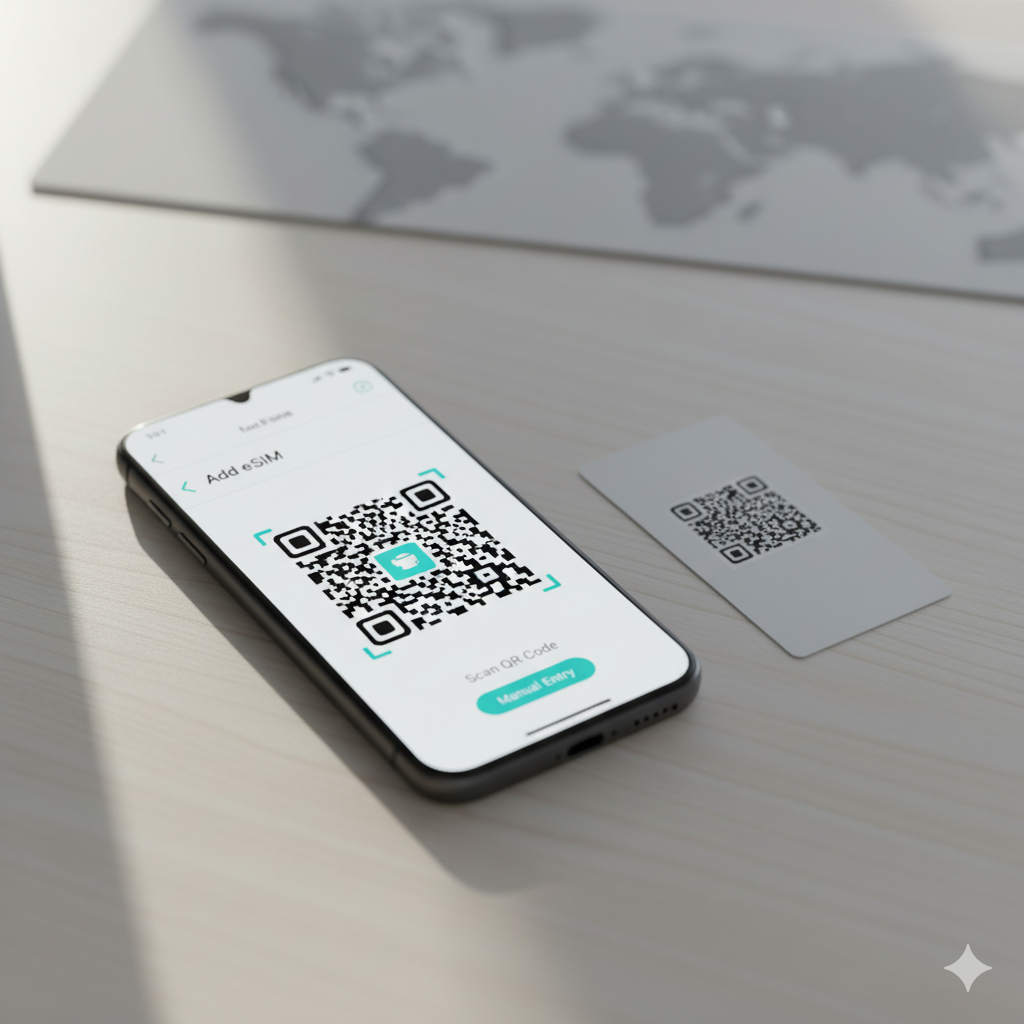eSIM 2025: The Complete Guide — How It Works, Activation, Transfer, Travel, Security & Troubleshooting
Everything about eSIM: how it works (eUICC/SM-DP+/SM-DS), activation on iOS/Android, device-to-device transfer, dual SIM, travel/roaming, security and privacy, troubleshooting, and FAQs.

eSIM 2025: The Complete Guide — How It Works, Activation, Transfer, Travel, Security & Troubleshooting
eSIM replaces the plastic SIM with a digital profile stored on an embedded eUICC chip. You can download a profile from your carrier using a QR code or activation code, keep multiple lines on one phone, and switch without opening a SIM tray.
1) Core Concepts
- eUICC: the embedded chip inside your device hosting SIM profiles.
- Profile: your line’s identity — number, keys, and network settings.
- SM-DP+: the carrier’s secure server that provisions eSIM profiles.
- SM-DS: discovery service to help devices locate profile servers.
- iSIM: next step integrating eUICC into the SoC; managed similarly.
2) Pros & Limitations
Why eSIM?
- Instant activation — no plastic, no tray.
- Effortless dual SIM (personal + work, local + travel).
- Fewer mechanical failures; better sealing against dust/water.
- Stronger protection against cloning/tampering.
Common limitations
- Device and carrier support required.
- Transfers may need deactivation and re-issuance from the carrier.
- Some plans limit hotspot or VoLTE/VoWiFi on certain devices.
3) Device Compatibility (Quick View)
- iOS: modern iPhones support eSIM (and future iSIM on some platforms).
- Android: many Samsung/Pixel/Xiaomi and others — check network settings.
- Wearables: require explicit carrier support.
4) Activation on iOS & Android (Generic Steps)
iOS
- Settings → Cellular/Mobile → Add eSIM.
- Scan QR or enter activation code.
- Name the line (Work/Personal) and choose default Data/Calls.
- Reboot if required.
Android
- Settings → Network & Internet → SIM → Add eSIM.
- Scan QR / enter code / use automatic discovery.
- Enable data/calls and set labels.
- Reboot if required.
5) eSIM Transfer
- Device-to-Device: supported on some platforms via a guided migration flow.
- Deactivate & Re-issue: if migration isn’t available, ask your carrier to revoke and re-provision for the new device.
- Keep the ICCID or profile data handy when possible.
6) Dual SIM Strategies
- Pick the best data plan as your default; keep your main line for calls.
- Enable Wi-Fi Calling where indoor coverage is weak.
- For travel: keep your home line idle for calls/SMS, add a travel eSIM for data.
7) Travel with eSIM
- Compare local carriers at destination vs global multi-country providers.
- Check hotspot and fair-use policies before purchase.
- On arrival: activate the travel eSIM and set it as the default data line.
8) Security & Privacy
- Profiles are delivered over encrypted channels from SM-DP+ to the eUICC.
- Use strong device passcodes and, where available, eSIM lock.
- Never share QR codes or activation credentials.
9) Troubleshooting
| Symptom | Likely Cause | Fix |
|---|---|---|
| No carrier name | Inactive profile or weak signal | Reboot, toggle Airplane mode, verify profile is enabled |
| No data | APN or data plan not active | Set carrier APN; select this line as default data |
| QR fails | Expired/invalid code | Request a new activation from carrier |
| Dropped calls | VoLTE/VoWiFi disabled | Enable from settings if supported |
10) Enterprise Notes
- Central eSIM lifecycle via MDM/EMM.
- Fast revoke/re-issue on loss or theft.
- Roaming cost control with temporary travel eSIMs.
11) Glossary
- eUICC: embedded chip hosting eSIM profiles.
- SM-DP+: server that securely provisions profiles.
- SM-DS: discovery mechanism.
- ICCID: SIM/eSIM identifier.
12) FAQs
Can I store multiple eSIMs?
Yes, many devices store multiple profiles; simultaneous activation depends on device capability.
Does eSIM affect battery?
Comparable to plastic SIM; signal strength matters more.
Do I need internet to activate?
Yes — the profile is downloaded from SM-DP+ over data/Wi-Fi.
Conclusion
eSIM brings speed, flexibility, and stronger security. With proper activation, dual-SIM strategies, and smart travel use, you get reliable connectivity at lower cost.